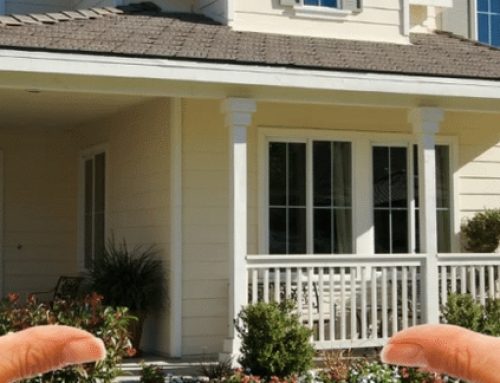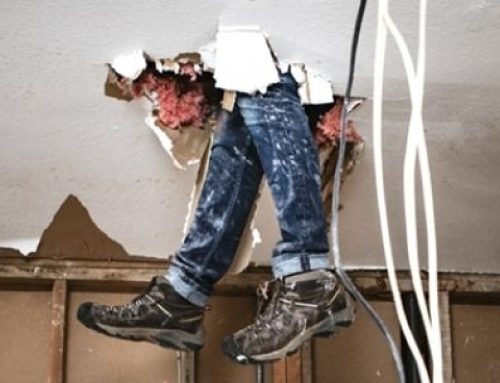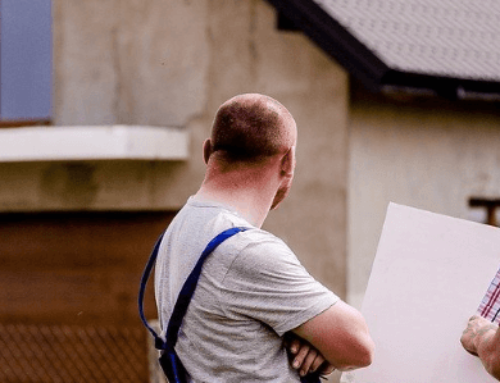House hunting can be one of the most exciting endeavours you ever undertake. It’s like going window shopping for the next big chapter of your life. However, with all the excitement that comes with finding your dream home, the gravity of making such a big financial commitment can be pretty overwhelming. This is especially the case when you start to think of all the red flags that you need to look out for.
Not all houses are created equal, so you need to ensure that no matter how love-struck you are with a property, you can still take a step back and look at each home as objectively as possible. Of course, the only way to know for sure what you’re dealing with is to set up a pre-purchase property inspection. This will give you a comprehensive understanding of the true condition of the house in question and provide you with a full inspection report, complete with all the home’s defects.
Now comes the big question, “Should I buy it, or not?”
This is not an easy question to answer. Especially now that you have a full list of the property’s concerns to think about. Even though every defect is important to consider, not all defects mean that a property is unfit for purchase. So how can you tell?
Let’s take a look at the major red flags that should make you think twice before buying a home:
Structural Issues
Defects that concern the overall structure of a property are generally the most common and oftentimes the most easily noticeable. Structural defects can present as very minor cosmetic concerns, such as small cracks in the wall, or as major structural damage whereby significant repair is needed to redeem the property from safety issues. Depending on the severity of the problem, structural damage can be a major concern for potential buyers not willing to pay excessive repair bills to rectify foundational problems.
Roofing concerns
Roofs are kind of a big deal. If the roof of a property is compromised then you can expect to have some seriously expensive work on your hands. Certain types of roofs have a higher chance of becoming susceptible to leakage which can result in major repair costs. However, the overall condition of any roof, regardless of shape, should be a serious consideration when buying a new home. This is going to include the gutters, tiles, and drain pipes amongst others.
Asbestos and Mould
Mould can more often than not be easily identified through sight or smell. It will usually be found under the floor, in roof cavities or on walls. At their worst, mould spores can cause serious health problems, however it’s the root cause of the mould that will generally be your biggest cause for concern. Asbestos on the other hand can be almost impossible to identify and will often go completely unnoticed to an untrained eye, leaving unsuspecting homebuyers in a potentially deadly situation. This is no exaggeration – Asbestos can be lethal and there is no safe level of exposure to its hazardous fibres.
Drainage concerns
There are a multitude of problems that can occur from inadequate drainage and water run off in and around a property. This can cover anything from roof leaks to problems with raised ground level. The latter is due to a deficiency in sub-floor ground ventilation, which is essential for the sufficient flow of damp air within the underground areas of the property. When sub-floor ventilation is jeopardised, rain water run off and ground seepage becomes trapped and can often lead to mould growth, timber deterioration, and the perfect environment for termites to flourish. Worst case scenario, it can cause serious damage to the property’s foundations, resulting in the compromise of stumps and footings, which can be extremely expensive to replace.
Termites
So tiny, yet so devastating. Termites will eat away at the core of a property’s structural foundations, slowly hollowing it out from the inside. Sneaky little creatures, termites are notoriously difficult to notice and will often only be found once its too late and the damage is already done. The wreckage that termites can cause is no joke either, these little pests result in more structural deterioration to Australian homes than floods, fires, and storms combined! So do yourself a favour and be sure to get a pest inspection before purchasing a property that’s also home to thousands of voracious little wood eaters.
So does this mean I shouldn’t buy?
This is by no means an exhaustive list of defects but the issues listed above should definitely be raising some alarm bells. Every house needs to be assessed on a case by case basis as there are a plethora of interweaving factors that are all going to determine the severity of a given defect.
Whether a property defect is the catalyst for your official rejection or not is going to be entirely up to you and what you want from your next home. Are you looking for a home that’s entirely defect-free, or are you willing to take on some extra repair work for a better price?
This is another important point to consider, since any potential defect that is found can ultimately be used to your advantage! Building Masters even offer a Property Negotiation Service where we use our comprehensive defect reports to work out a deal with the owner or agent on your behalf. This way, housing defects can actually end up saving you thousands of dollars on the property’s listed price.
Navigating property defects can be a very complicated task, which is why it’s best to leave it to the experts. With our pre-purchase property inspection you will be given professional consultation regarding the consequences of any potential defects, and be privy to expert advice concerning any associated costs. We want to make sure that you have all the information you need to make the best possible choice for your next step moving forward. So if you’re in the market for a new home, keep us in mind when it comes time to make that final decision.







Leave A Comment